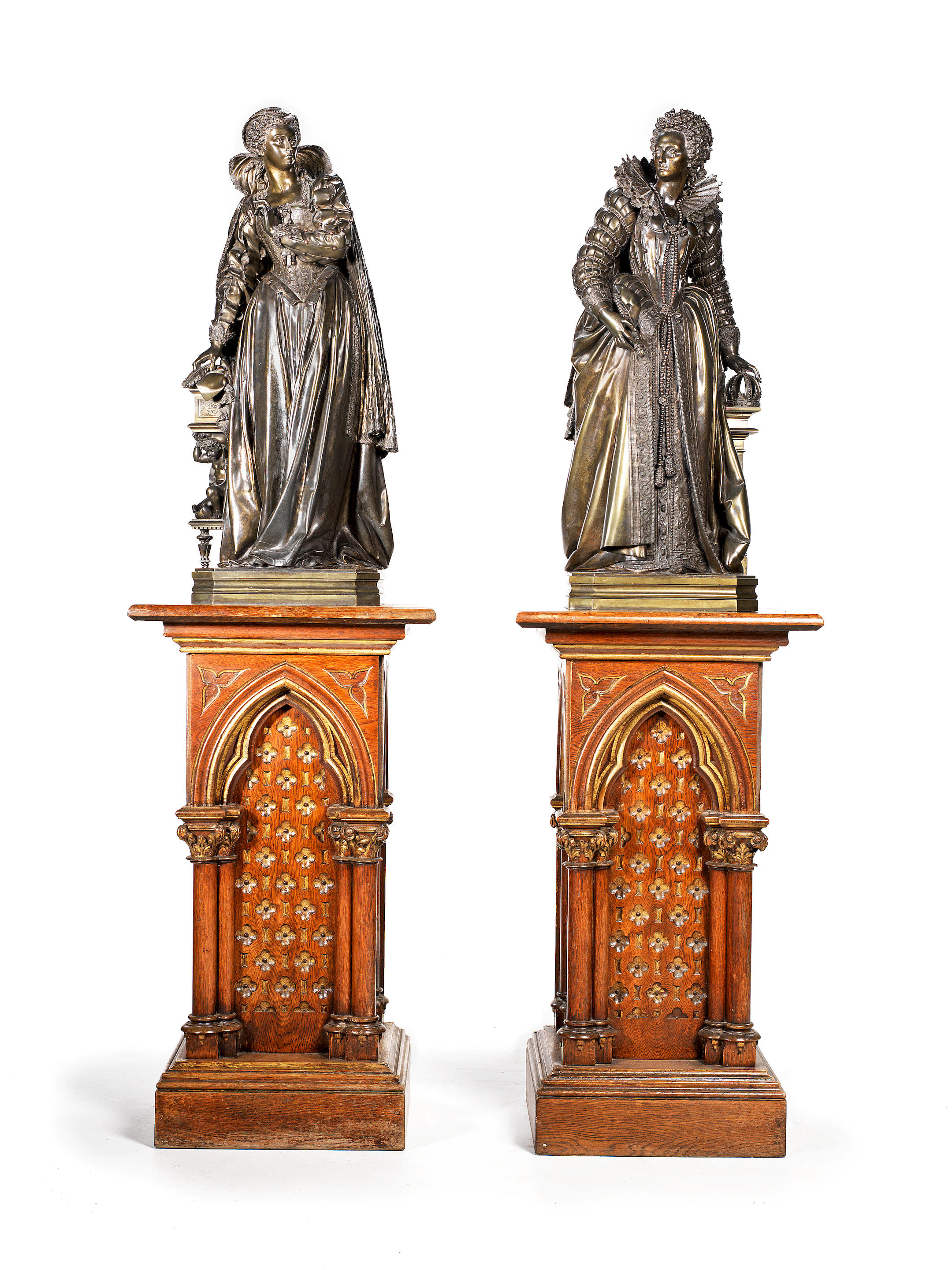MARY I, Queen of England (1553-1558). Letter signed ('Marye the Quene') addressed to the Earl of Shrewsbury, as President of the Council in the North, Westminster, 2 June 1557.29 lines written in a secretary hand in brown ink, signed by the Queen in the upper margin and inscribed 'By the King and Quene', one page, folio , papered seal, integral address leaf (splits in folds touching letters in 4 words, a few tiny holes, traces of tape, slightly soiled, affixed to card mount by tape). The dramatic announcement of the declaration of war against France. 'We grete you well And send you herewith our Proclamation of warre against the Ffrench Kinge whiche our pleasure is to have kepte secrete until the xiith daye of this present month. which shall be Whitmondaye on which day assembling the people together, you shall publish the saide Proclamation causing as many of o[u]r subjects to take knowledge thereof as may be, to the intent that being identified they maye provide them selfs accordingly, as well for their owne suretie and defence as for the assisting and taking advantage upon their enemye if they can. And hereof we require you not to faile as you render our pleasure and commandement'. The letter continues with a declaration that despite the proclamation of war with France 'yet is there no enemytie intended against the Scotts', enjoining Shrewsbury to ensure that only 'faire and good demeanour' is used against them. Unless the Scots take hostile action, peace and friendship shall continue between the two realms. This intention is to be declared with the proclamation, which is to be made throughout those areas in his charge. The Queen had for some months been pressing her Council to support the war with France which she herself wished for. Preparations were under way in May 1557, and on 1 June, the day before the present letter was signed, the Queen had sent a commission to Norroy King of Arms to declare war on the French king (Henry II). Within three weeks the royal ships were ready to sail. The recipient of the letter, Francis Talbot, 5th Earl of Shrewsbury, was a member of the war party. Appointed Lord President of the North on Mary's accession, in 1557 he was in command of an army on the borders, raised to resist the Scottish invasion rendered likely by the war with France and which the Queen's assurances of friendship seek to pre-empt. Notwithstanding this, in the autumn the Scots declared their support for the French. The most traumatic moment of the war in France for the Queen was the loss of Calais in January 1558. Mary's marriage to Philip II of Spain, in whose name the letter is also issued although signed only by her, had taken place in 1554.
MARY I, Queen of England (1553-1558). Letter signed ('Marye the Quene') addressed to the Earl of Shrewsbury, as President of the Council in the North, Westminster, 2 June 1557.29 lines written in a secretary hand in brown ink, signed by the Queen in the upper margin and inscribed 'By the King and Quene', one page, folio , papered seal, integral address leaf (splits in folds touching letters in 4 words, a few tiny holes, traces of tape, slightly soiled, affixed to card mount by tape). The dramatic announcement of the declaration of war against France. 'We grete you well And send you herewith our Proclamation of warre against the Ffrench Kinge whiche our pleasure is to have kepte secrete until the xiith daye of this present month. which shall be Whitmondaye on which day assembling the people together, you shall publish the saide Proclamation causing as many of o[u]r subjects to take knowledge thereof as may be, to the intent that being identified they maye provide them selfs accordingly, as well for their owne suretie and defence as for the assisting and taking advantage upon their enemye if they can. And hereof we require you not to faile as you render our pleasure and commandement'. The letter continues with a declaration that despite the proclamation of war with France 'yet is there no enemytie intended against the Scotts', enjoining Shrewsbury to ensure that only 'faire and good demeanour' is used against them. Unless the Scots take hostile action, peace and friendship shall continue between the two realms. This intention is to be declared with the proclamation, which is to be made throughout those areas in his charge. The Queen had for some months been pressing her Council to support the war with France which she herself wished for. Preparations were under way in May 1557, and on 1 June, the day before the present letter was signed, the Queen had sent a commission to Norroy King of Arms to declare war on the French king (Henry II). Within three weeks the royal ships were ready to sail. The recipient of the letter, Francis Talbot, 5th Earl of Shrewsbury, was a member of the war party. Appointed Lord President of the North on Mary's accession, in 1557 he was in command of an army on the borders, raised to resist the Scottish invasion rendered likely by the war with France and which the Queen's assurances of friendship seek to pre-empt. Notwithstanding this, in the autumn the Scots declared their support for the French. The most traumatic moment of the war in France for the Queen was the loss of Calais in January 1558. Mary's marriage to Philip II of Spain, in whose name the letter is also issued although signed only by her, had taken place in 1554.
.jpg)













Testen Sie LotSearch und seine Premium-Features 7 Tage - ohne Kosten!
Lassen Sie sich automatisch über neue Objekte in kommenden Auktionen benachrichtigen.
Suchauftrag anlegen